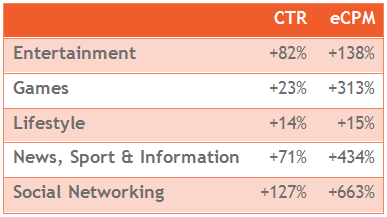Waiting. It's part of our psyche. Wherever and whenever we get the opportunity, in an orderly fashion, we'll get in line and wait.
That's because waiting in line can work. If you're in the line at your local bakery (maybe even reading this on a mobile device right now), you can be sure that, so long as you're patient, the bakery has enough bread, and you have money, you'll get what you came for.
Mobile advertising can work like this. A publisher's ad router will 'daisy chain' ad requests from buyers (ie advertisers), so if buyer A doesn't fill a request, it is sent on to buyer B, and so on until the ad is filled.
But this really does not scale. Imagine how the stock markets would look if everyone politely got in line. Each buyer would give their quote, in turn, and eventually the seller would, through some vague criteria, decide they'd heard enough, and sell to the highest bidder. It would be very inefficient, not to mention unfair.
Much better to have crowds for markets. Let everyone pile in, assess all the options, decide if they want to bid and announce their quotes, publicly and quickly. It would certainly make buying bread a lot more entertaining.
RTB is mobile advertising as markets
So as markets scale up, they work better with crowds, especially when they're automated like stock exchanges today. It's the same with mobile advertising: where we once had daisy-chaining, we are now seeing instantaneous bidding for each impression through big data and super-smart algorithms that were not available even a year ago. It's called Real-time Bidding, or RTB.
With RTB, everyone can decide whether they want to bid for an impression and if so, how much they want to pay. Interested parties all bid at the same time, and the bidder with the highest quote wins. And this all happens within milliseconds.
Often, RTB also has what's known as a second-price auction, in which the winner only pays the second-highest bid. Anyone who's won an auction on eBay will be familiar with this mechanism.
An example: imagine you're interested in cars, so you spend a lot of time on automotive sites and apps. One of them serves ads through RTB, on behalf of a bank and a car dealership, who both want to target people like you. The automated RTB system matches your profile to these advertisers, and if they decide to bid, the system chooses the highest bidder, the ad is served - and you see an ad on your mobile screen.
Buyers and sellers love RTB
For buyers, the main benefit of RTB is access. Like computer-driven financial markets, RTB gives them access to the entire RTB-enabled inventory, offering reach across billions of ad requests a month. If they have a Demand-side Platform (DSP) such as Adfonic's Madison, they can also choose exactly the exchanges and publishers they want to work with.
The programmatic buying of RTB helps with targeting, retargeting and segmentation, as buyers can bring big data to bear on their decisions. By applying demographic and behavioral data to each impression, they can judge how effective showing that ad to that audience might be.
And RTB is transparent. Buyers know where they are trading and how much they are bidding, and this transparency means they can exercise control, optimising towards the most valuable audiences through algorithms that tell them what is working.
For sellers, RTB is really quite a simple proposition: they benefit from the most efficient pricing mechanism there is - the market. This improves as the market scales up, as more bidders means greater bid depth, which means a fairer price.
These benefits are not just theoretical. At Adfonic, we're seeing solid evidence that RTB really does work. In the Adfonic Global AdMetrics Report for Q3 2012, we saw that RTB had increased performance significantly for mobile advertising buyers and sellers alike, across all channels, as you can see in the table below.

Mobile RTB: survival of the smartest
Given the benefits of RTB, it's hardly surprising that it's growing in popularity among advertisers and publishers. Forrester Research predicts US online video RTB spending will total $387 million at the end of this year, and $665 million in 2013, an increase of 72%. IDC reckons that global spending on RTB display advertising will accelerate at a 59% compound annual growth rate through 2016, making in the fastest growing segment of digital advertisinf. IDC also says mobile RTB is about three years behind display - but mobile advertising is innovating at an astonishing rate which could accelerate this.
How does this change mobile advertising? Well it really means that the playing field is levelled. Instead of waiting in line, where some lose out because of their place and prices are never quite fair, everyone on an exchange has equal visibility of every impression, and equal opportunity to bid.
So it now becomes a question of who has 'the smarts' - that is, who has the biggest data, the smartest algorithms, the best people and the latest tech. It's not just about patient waiting, nor is it elbows in the crowd. It's not the loudest, or the strongest or the biggest. With mobile RTB, it's about the survival of the smartest. So get smarter.